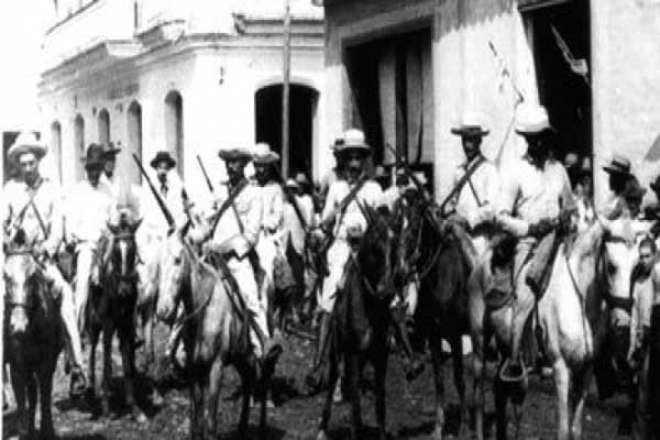 Because of its magnificent strategic position, this city was always a place to which Spain gave particular attention during the independence wars of the 19th century. For this reason, its military engineers protected it with barbed wire, forts, moats, infantry barracks, cavalry and artillery, and hundreds of soldiers armed to the teeth. They said, "We are impregnable."
Because of its magnificent strategic position, this city was always a place to which Spain gave particular attention during the independence wars of the 19th century. For this reason, its military engineers protected it with barbed wire, forts, moats, infantry barracks, cavalry and artillery, and hundreds of soldiers armed to the teeth. They said, "We are impregnable."
The intelligence services of Major General Calixto García were aware of everything. Thus, at dawn on August 28th, 1897, the brave man, who was currently operating in the area, decided to strike, and assaulted the city with his troops. He had the help of María Machado, one of his secret agents and daughter of the Spanish general Emilio March, head of the Third Division of the Spanish Army, located in Holguín.
At the risk of her own life, María managed to get the plans designed by the young captain of the Liberating Army Mariano Lerma Varona to the high Mambí officer that was camping in the deep of the wood. Such documents had all the information needed to direct a risky operation that lasted for three days and resulted in fierce clashes.
In the fray, the Mambí Army released a dynamite cannon. Among his gunners was José Martí Zayas-Bazán, son of the Cuban National Hero, José Martí. Such was the courage he shown in that battle that General Calixto promoted him to Captain. The order of promotion reads: "For his heroic behavior carried out in the handling of the cannon in the city of Tunas de Bayamo." By the way, the thunder of the cannon affected him in such a way the eardrums that suffered from deafness all his life.
On the morning of August 30th, the occupants of the infantry barracks surrendered to the Liberating Army. Some 1,200 Spaniards were killed and 1,200 guns were occupied, two cannons, one million bullets, half a thousand machetes, as many grenades, as well as clothes, food and medicines.
On the Liberating Army side, some 25 Cubans died, among them a very loving one: Colonel Ángel de la Guardia, the last man who saw José Martí alive on May 19, 1895, when he was holding his revolver and fell fighting in Dos Ríos. Custodio Orive, Francisco Sidano and Lorenzo Ortiz also died in combat.
The taking of Las Tunas on August 1897 was one of the most important artillery operations of the War of 1895 and defined the strategic decline of Spanish domination in Cuba.
Dr. Rolando Rodríguez, researcher on the subject, has said that in that action "the Spaniards fought bravely and only when it was impossible for them to continue the fight, without obtaining any support from abroad, they agreed to surrender. Calixto García guaranteed their lives and treated them with the honors that Cubans dispensed to the defeated."
The city was held by the Mambí forces until September 6th. At the withdrawal of the Mambí troops, Major General Calixto García ordered to set it on fire. The events were so important in international public opinion that the colonial authorities lost confidence in Valeriano Weyler, their strong man, and two months later he was replaced by General Ramón Blanco.





